calsfoundation@cals.org
Gravette (Benton County)
| Latitude and Longitude: | 36º25’19″N 094º27’12″W |
| Elevation: | 1,220 feet |
| Area: | 15.28 square miles (2020 Census) |
| Population: | 3,547 (2020 Census) |
| Incorporation Date: | January 27, 1899 |
Historical Population as per the U.S. Census:
|
1810 |
1820 |
1830 |
1840 |
1850 |
1860 |
1870 |
1880 |
1890 |
1900 |
|
– |
– |
– |
– |
– |
– |
– |
– |
– |
447 |
|
1910 |
1920 |
1930 |
1940 |
1950 |
1960 |
1970 |
1980 |
1990 |
2000 |
|
569 |
754 |
812 |
865 |
894 |
855 |
1,154 |
1,218 |
1,412 |
1,810 |
|
2010 |
2020 |
|
|||||||
|
2,325 |
3,547 |
|
Gravette, located in Benton County, is a tight-knit community whose motto is “The Heart of Hometown America.” It was once referred to as the “Gate Community,” presumably in reference to its being a gateway to northwest Arkansas from Oklahoma, Kansas, and Missouri. Highway 71, now running through Bella Vista (Benton County), once passed through Gravette. Gravette, at the intersection of State Highways 59 and 72, is a conservative community with a population calculated at 2,325 in the 2010 census. The town has nineteen churches, three of which are over 100 years old.
Nebo (now referred to as Old Town) in Chalk Valley was the original settlement of the community. The settlement was platted in the 1870s by Joseph P. Covey, who moved to Southwest City, Missouri, in 1881. Ellis Tillman Gravett opened the Chalk Valley Distillery in Nebo and also owned a general mercantile store. In 1891, he moved his store west out of the valley to what is now downtown Gravette.
On July 17, 1893, Ellis Tillman (E. T.) and Laura Gravett signed a right-of-way for the Kansas City, Pittsburg and Gulf Railroad. Land was sold to the Missouri Coal and Construction Company. With E. T. Gravett managing the project, the land was platted for the original town, and papers were filed July 26, 1893. The town of Gravette received its charter on August 9, 1893. No one is sure how or when the town got the extra “e” at the end of its name. The most popular story involves confusion within the postal service and a town with a similar name. Gravette celebrates its founding on “Gravette Day,” the second Saturday in August.
The Gravette Medical Center Hospital was established by Dr. Billy V. Hall in the building that is now Motel 59 on Highway 59. A new ninety-nine-bed hospital facility located in southwest area of Gravette on Irving Street was completed in 1975. The hospital has been a major employer in the city since it opened. A clinic, Gravette Medical Associates (now owned and operated by Mercy Medical), sits on property adjacent to the hospital and has five doctors on staff. Other industries providing employment to the community are R&R Packaging, Hendren Plastics, and Insulbead, Inc., along with the usual supermarkets, restaurants, drug stores, and convenience stores. Gravette also has a landing strip and hangar designed to accommodate small aircraft on the east boundary of the city.
Gravette has had its share of noteworthy citizens over the years. Captain Field E. Kindley, the fourth-ranking flying ace in World War I, spent his youth in Gravette living with an aunt and uncle. A park near downtown, Field E. Kindley Memorial Park, is dedicated to his memory. He was killed in a plane crash during a training exercise at Kelly Field in San Antonio, Texas, in 1920. He was interred with full military honors in Hillcrest Cemetery along Highway 59 north.
Other notable residents include early cowboy film star Lloyd “Slim” Andrews; Gene Stephens, who joined the Boston Red Sox in 1952 and spent twelve years as a defensive outfielder with a career fielding average of .973; former U.S. senator Tim Hutchinson and his brother, Asa Hutchinson (former U.S. representative, director of the Drug Enforcement Administration, undersecretary for Border & Transportation Security–Homeland Security, and later governor), both of whom were born on a farm just south of Gravette near Spavinaw Creek; Kim Hendren, who has served in both the Arkansas Senate and the Arkansas House of Representatives; and country and western singer Jeff Carson, whose recordings have made it to the Top Ten on the country charts. Arkansas Women’s Hall of Fame inductee, activist Dorothy Stuck, was born in Gravette.
In 1989, the parents of a child attending the local school filed suit against the Gravette School District, asserting that the district’s policy of providing optional, on-campus Bible study was a violation of the Establishment and Free Exercise Clauses of the First Amendment. The federal court case of Doe v. Human ruled in favor of the parents, after which local citizens built a privately funded chapel in order to continue the Bible study for students.
The community of Gravette entered the national spotlight in early 2021 after one resident, admitted white supremacist Richard “Bigo” Barnett, participated in the January 6, 2021, domestic terrorist attack on the U.S. Capitol in Washington DC. During the attack, he was pictured sitting in the office of Speaker of the House Nancy Pelosi and later posed with an envelope he looted from her office.
The city bought the historic Kindley House and, with the help of a substantial grant from the Arkansas Historic Preservation Program, completely renovated the building. It now houses the Gravette Historical Museum, which contains exhibits of Captain Kindley’s life and military service, natural history displays, a photo gallery of graduating classes from Gravette High School extending back to the 1920s, and many items depicting Gravette’s past.
Area attractions include the Spanish Treasure Cave just north of the city limits. This cave was rediscovered in 1885. According to legend, Spanish soldiers raided an Indian camp and stole a fortune in gold. The gold was hidden in one of the passageways in the cave. Seeking revenge, the Indians found the Spaniards at the cave and killed them but did not recover the gold. Treasure hunters searched fruitlessly for the gold for years. The cave became a tourist attraction open to the public in the late 1930s. The passages extend for miles, and there are many yet to be explored.
For additional information:
Evans, Robert D. “Gravette History.” Benton County Pioneer 24 (Winter 1979): 4–9.
“Gravette: Yesterday… Today… and…” Benton County Pioneer 38 (Fall 1993): 59–65.
Gravette, Arkansas. https://www.gravettear.com/ (accessed June 4, 2022).
Michael von Ree
Gravette Historical Museum
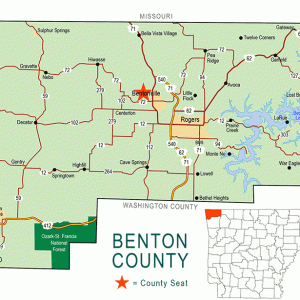 Benton County Map
Benton County Map 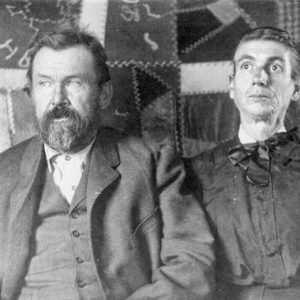 E. T. and Laura Gravett
E. T. and Laura Gravett  Gravette Church
Gravette Church  Gravette High School
Gravette High School  Gravette Historical Museum
Gravette Historical Museum  Gravette Main Street
Gravette Main Street 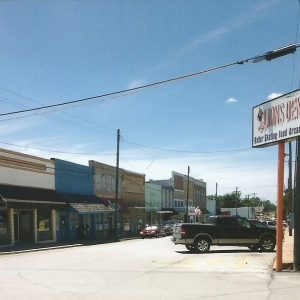 Gravette Street Scene
Gravette Street Scene  Kim Hendren
Kim Hendren 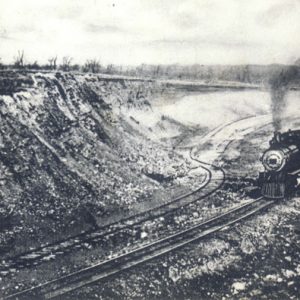 KCS Railway near Gravette
KCS Railway near Gravette  Field Kindley Memorial
Field Kindley Memorial 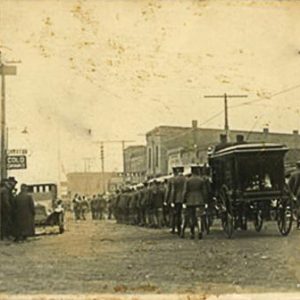 Field Kindley Funeral
Field Kindley Funeral 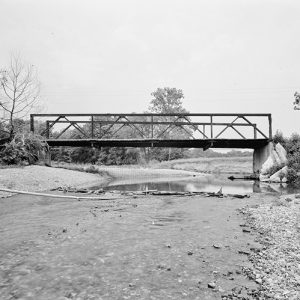 Spavinaw Creek Bridge
Spavinaw Creek Bridge  Gene Stephens
Gene Stephens 



What was the street name of the old elementary school (1960s), which was near the football field and home of Mr. Duffy, the superintendent? It was close to the old high school and the newer one that I attended in the mid-1960s.